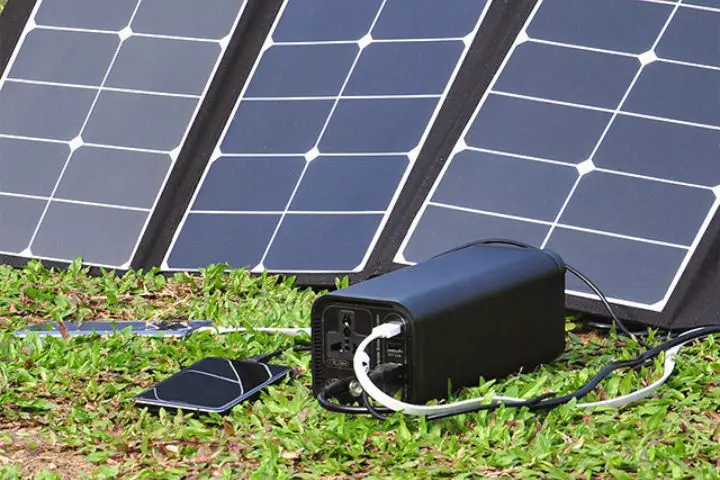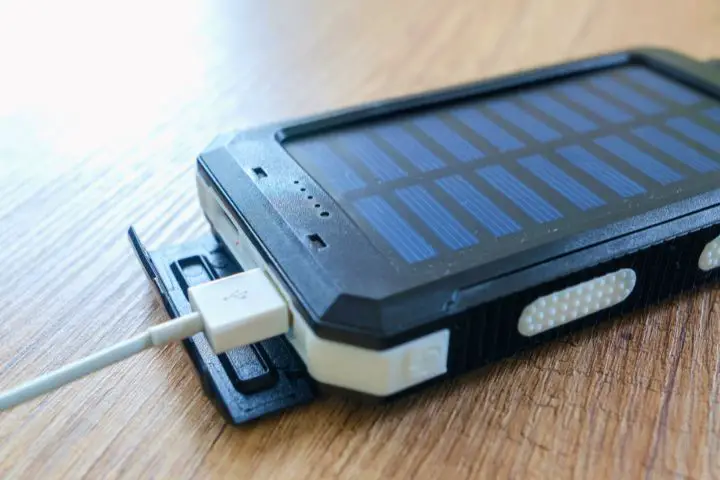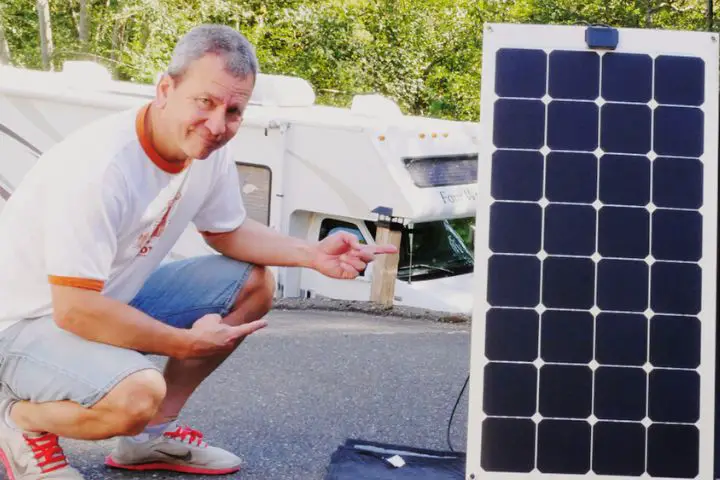Portable Solar Panels: The Eco Traveler’s Ultimate Guide
I can hear the gears turning in your brain: “What’s so special about portable solar panels? Their charge is pretty low, isn’t it?” Well, hold onto your hats because you’re in for a surprise!
These little nuggets of solar goodness have been causing quite a stir recently, and for all the right reasons. Whether you’re a seasoned outdoors person, a global nomad, or just someone who fancies a greener earth, these portable powerhouses are just the ticket to power up your life on the move.
And you know what? They even look good while at it!
But what about the nitty-gritty of their capabilities, elements, raw power? That’s what we’re here to uncover. So let’s dive right in and reveal the pros and cons of each type!
3 Types of Portable Solar Panels and Power Banks
If you’re anything like me, adventure and exploration are at the core of your life. But how do you stay energized and connected when off-grid? The answer lies in portable solar panels!
Be warned though – choosing the right one can be a labyrinthine task. That’s why I’m bringing some useful info that’ll help you find your way.
1. Foldable Solar Panels
These babies are all about convenience! With their feather-light design and user-friendly features, foldable panels are perfect for backpackers, hikers, anglers. Basically, anyone looking for a reliable and portable power solution.
And get this: with energy efficiency constantly improving in flexible panels, they can generate over 200 watts with almost 20% efficiency (according to Forbes). They come in different shapes and sizes to match your energy needs with your storage capacity. Talk about versatility!

Benefits: Portable foldable solar panels are weather-resistant thanks to the tough fabric material. This means you can strap them anywhere – from your backpack to a nearby tree trunk or even your tent roof – wherever those sweet sun rays strike! Plus, they’re much easier to clean compared to other types of photovoltaic devices out there.
Any drawbacks? Well…they might take a little more time charging up than some other options on the market – especially if the weather slows Mr. Sun down a little bit! Patience is key here, folks.
TL;DR
Foldable portable solar panels are easy to use and lightweight, ready for your next adventure without adding much bulk or weight to your pack.
2. Solar Chargers
A solar charger is like having your very own solar-powered energy drink for your phone, tablet, or even camera! But what sets them apart from other types?
Features: Solar chargers are designed with lightweight materials and built-in photovoltaic cells to soak up as much solar energy as possible. Plus, they have a USB port so you can plug in whatever tech goodies you need to charge – no adaptors necessary. Some even come with small internal lithium polymer batteries so you can store energy for later use.
Benefits: The biggest perk is they’re perfect for staying juiced up on the go without lugging around bulky batteries or rushing to find outlets. Just throw them in your backpack or pocket and bam! You have sun-powered electricity wherever you wander.
Any downsides? When something’s small(ish), it’s bound to have limitations. For starters, they might be slower at charging your devices than what you’re used to from traditional chargers – and their capacity is not nearly as high. But let’s put it this way: when pure renewable power is available where you need it, when you need it, there’s hardly much to complain about.
3. Solar Power Banks

If merging solar power with backup energy solutions sounds more like your cup of tea, then allow me to introduce solar power banks.
Picture this: a sleek portable device that has its personal solar panel installed! It kind of looks like a must for many who crave adventure or live in an area with regular blackouts or cuts.
These guys are like having a completely affordable power ecosystem in the palm of your hand.
Features: Not only do solar power banks feature multiple USB ports (one less cable to worry about!), but they also integrate photovoltaic panels that absorb all the free energy floating around during the day hours. Then they store it in their rechargeable lithium-ion batteries until ready for use.
Benefits: Hear ye hear ye, it brings forth all the advantages of both a power bank AND a solar panel. You don’t have to worry about the battery running out – this portable guy will secure your electronics throughout the day, even if you’re traversing mountains or trekking through jungles! As long as there’s any daylight to leach on, that is.
Drawbacks: Granted, the addition of solar technology gives these banks additional perks. However, it also brings in some limitations, such as added bulk and weight (which can mess with one’s backpacking game) and, again, taking more time to fully charge up.
And that’s where portable solar panels stand now – on the cusp of an epic shift towards clean renewable energy. According to the U.S. Department of Energy, studies indicate that solar power is likely to meet almost half of all electricity demand by 2050! But even if you don’t choose to see them as a step towards sustainability, they are convenient enough to be on your to-buy list.
How Efficient Are They in Different Weather Conditions?

Sure, more sun equals more power, but what happens when it’s cloudy or raining?
Well, most portable solar panels can still produce some power even under less-than-ideal conditions (up to 50% of their max output on cloudy days). Just be careful if you’re dealing with waterproofing issues on your solar chargers or power banks.
Speaking of which, as you could read above, there are so many different types of portable solar options out there!
Solar panels that fold up can deliver anywhere from 10W to over 100W of energy. Solar chargers have an output between 5W and 21W. But here’s the twist – instead of Watts, solar power banks with storage capacities are measured in mAh. Whether you’re camping for a week or living off the grid long-term, there’s probably a portable solar solution out there for you.
Don’t tell anyone, but my favorites are solar power banks when it comes to power efficiency. Their storage capacity is quantified in milliampere-hours (mAh), and they pack quite a punch! Starting at about 5,000mAh and reaching up to 30,000mAh or even more, solar power banks are a force to be reckoned with.
What I learned through my pouring-cats-and-dogs camping experiences is you need to keep your portable solar panels as dry as possible. You don’t want to almost start a fire with a power bank that caught bits of rain!
Some solar chargers and solar power banks are not entirely waterproof. So make sure they are warm and cozy in your backpack, away from rainfall.
How Cost-Effective Are Portable Solar Panels?
Now comes the money question: Is it really worth investing in one of these things?
Heck yeah!

Sure, the initial costs seem kinda hefty (anywhere from $20 to $500, depending on what kind you get), but think about all the long-term benefits. First, you’ll save money by not having to buy disposable batteries or fuel for generators. You’ll also reduce your reliance on non-renewable energy sources. Plus, if you’re a frequent traveler, no more adapters or converters needed!
Worst-case scenario, even if you don’t end up using your portable solar panel all that often (fingers crossed no emergencies!), they’re still pretty cool conversation starters.
Maintenance and Durability of Portable Solar Panels
Taking care of your portable solar panels isn’t exactly rocket science. Still, doing it regularly IS important if you want them to last as long as possible! Here are some easy-peasy maintenance tips to keep in mind:
- Keep things clean! Just like with any tech gear, regularly wiping down your portable solar panel with a soft cloth or sponge helps keep it performing at its best.
- Handle with care. Seems obvious, right? But seriously – even though these things are built to be tough, you don’t wanna accidentally knock ’em around and damage anything.
- Give it the old once-over. Every now and then, make sure to check all the cords and connections for any wear & tear or other damage.
- Storage matters too! When you’re not using your portable solar panel (which hopefully isn’t TOO often!), stow it away somewhere cool and dry where it won’t get exposed to extreme temps or sunlight.
That’s pretty much all there is to keep things working smoothly on the maintenance front. If you DO take good care of your portable solar panel, it definitely repays you by keeping on “trucking” for anywhere from 10 to 25 years!
Just remember: if you’re out in the wee wilds dealing with rough weather or bumpy roads, maybe give it a little extra tender loving care.
Bottom Line

Let’s sum it up here: Portable solar panels play an important role in our collective efforts to become more sustainable and energy independent. Whether you’re out on your next epic hike or just trying to keep your phone alive during a power outage, these things have you covered.
If everything, consider them an investment in your future – both in terms of convenience and clean energy!





